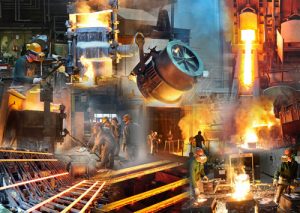Posted: November 1, 2019
When it comes to the minefield of trade tariffs, Sassda is not a policy creator or implementer but rather acts as an invaluable conduit and facilitator based on its strong relationships with the relevant government bodies, to ensure all our members’ interests are equitably represented in an independent and objective manner. Tariffs expert and Sassda Market Intelligence Specialist Lesley Squires explains how this complex relationship works.
Q : What are these tariffs & why are they important?
A : The Harmonized Systems (HS) codes were developed by the World Trade Organisation (WTO) and are the tariffs used by every country in the world on their imports and exports and the basis upon which trade agreements are negotiated. The original negotiations involved the WTO setting a bound rate for each product type. This is the highest rate the tariff on that particular product type can ever go to – a ceiling – but this may differ from the actual tariff rate that can actually be applied, which may be lower than the bound rate.
Q : Is there an argument that the import tariff should always be higher than the export tariff locally?
A : Well not necessarily…because you can’t penalise a local company that has to import components and products that are NOT manufactured in South Africa. That’s not to say we shouldn’t keep striving to develop local industries to manufacture stainless steel components that are not currently available here. For example, we are currently working with industry to look at the establishment of a local Fastener manufacturing capability that are the literal nuts and bolts, used across a variety of industries and have huge potential to boost the local industry. However, they require specialised tooling which is not yet possible locally. Unfortunately, the tariffs on imported fasteners have already been increased to give the ‘room’/a cushion to establish a local fastener manufacturing industry. This represents something of a ‘Catch 22’ situation since local users of fasteners are incurring additional costs in the interim months it takes to get the local industry up and running.
Q : So what is the issue about China and tariffs?
A : When the first negotiations happened, South Africa insisted on being classified as a Developed Country with resultant lower import tariff parameters, whereas China insisted on being categorised as a Developing Country and asked for 15 years to implement these tariffs, which gave them a huge trade advantage for many years.
There are also ongoing ‘manipulations’ of these tariffs which creates an unlevel trade playing field. For example, under every tariff headings, especially the big ones, there’s an ‘Other’ category to cover any product type not mentioned in that tariff description and ‘Other’ is always a low tariff rate. We find that this type of potential ‘loophole’ is often taken advantage of to create an unfair trade advantage.
Another example is the Hollowware manufacturing sector, which is an employee intensive industry that has excellent local job creation potential. However, the local industry is constantly being undercut by imported Hollowware, which is often brought in at an illegal/lower than required tariff rate, something Sassda is actively lobbying to correct.
Q : How does Sassda view its role in terms of lobbying for optimal tariff rates for its members?
A : Sassda’s current interactions with the key players in tariff negotiations – namely International Trade Administration Commission (ITAC) and the Dti – are based on deep relationships, developed over many years and are therefore irreplaceable and invaluable. We often engage with members at looking at the tariff headings to see if we can increase the import duty to defend the local markets. However, despite Sassda being an invaluable conduit between members and the relevant government bodies, we are not a policy creator or implementer. Sassda sees its role as serving as an invaluable conduit between the industry and government by providing assistance with representation of member interests and the provision of the relevant support documents and trade analysis including in depth stats and data statistical analysis. However it can be a bit of a minefield representing all members ‘ interest equitably and in an independent objective manner when so much is at stake for their businesses.



